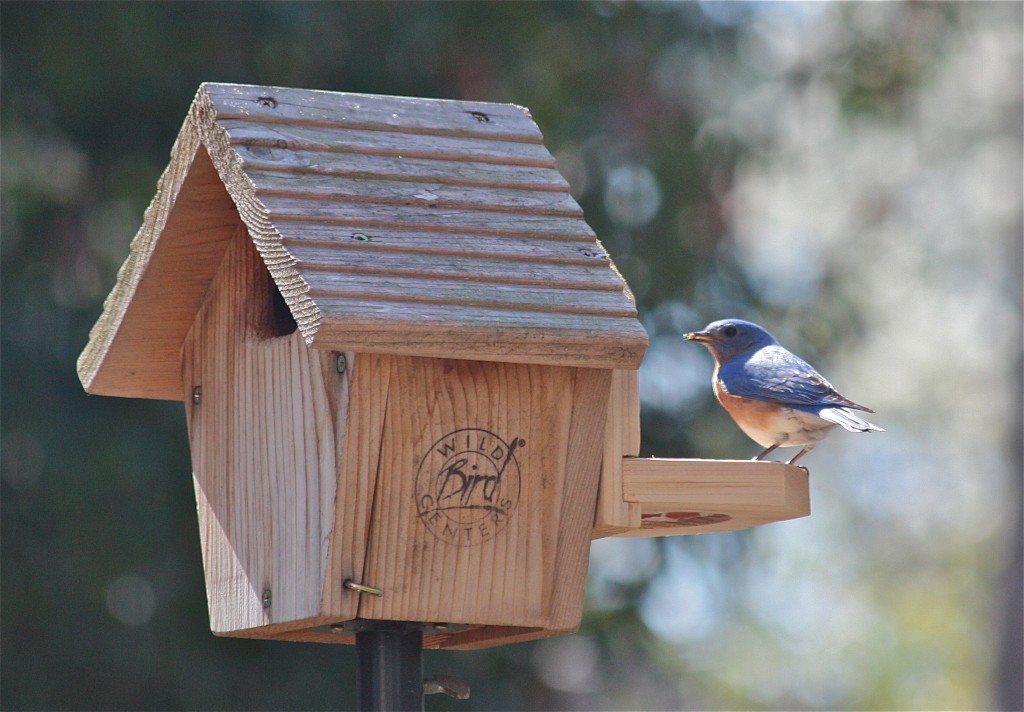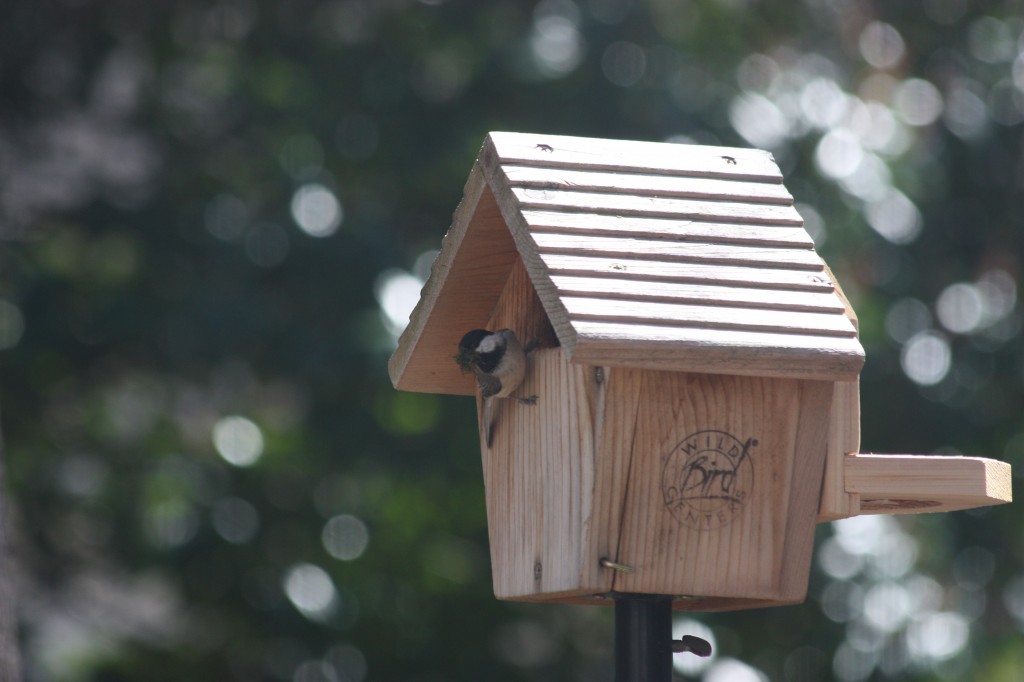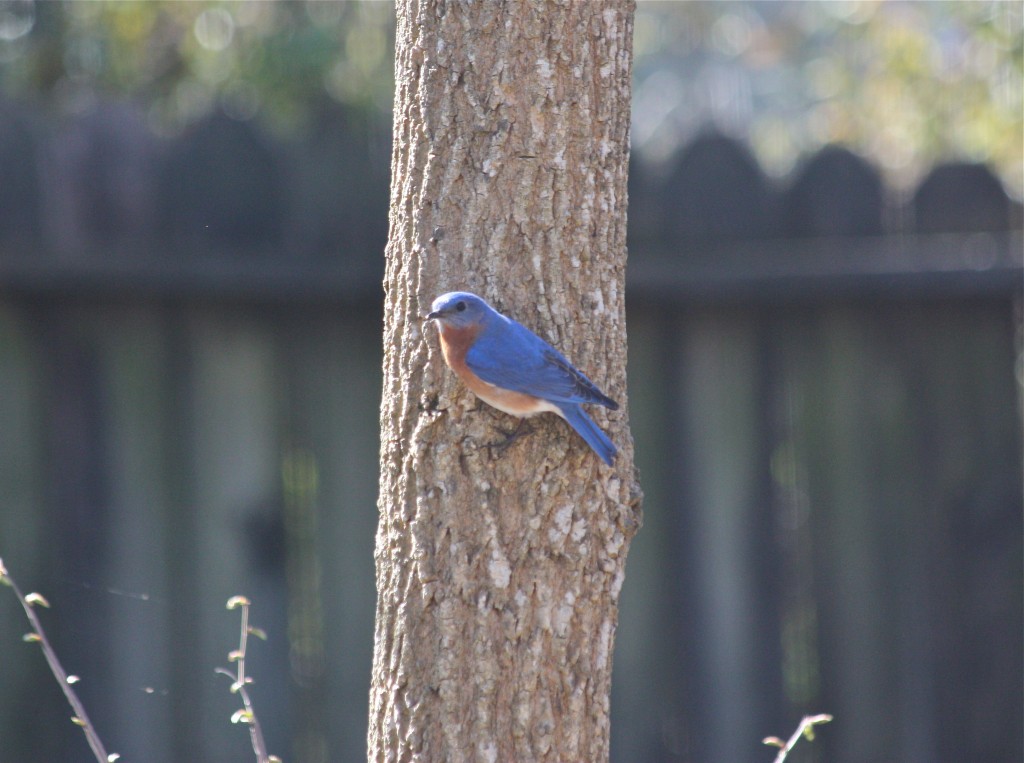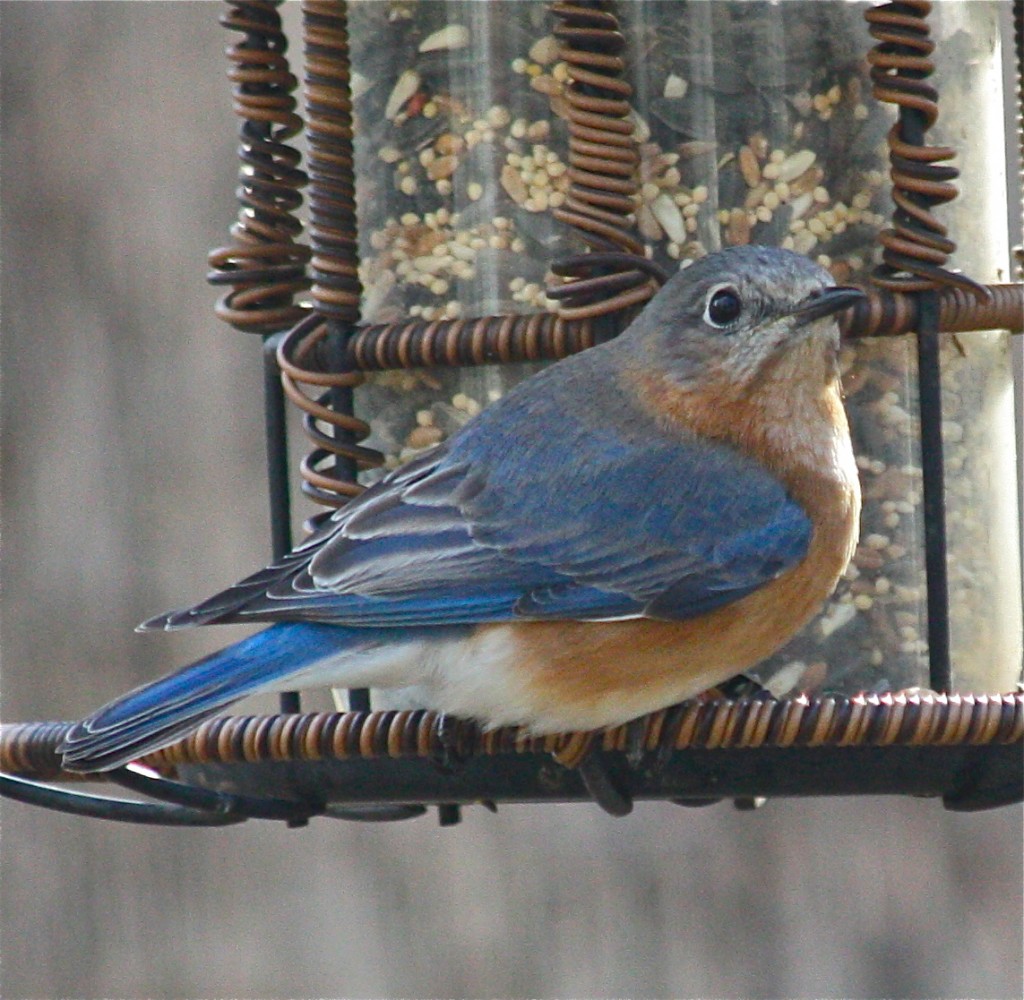Bluebirds are attracted to mealworms, but so are lots of other birds. So how do you keep the mealworms from being gobbled up by wrens, mockingbirds etc before the bluebirds ever see them?
Someone at our local Wild Bird Center advised that we attach a bluebird feeder right to our bluebird house. This way, the bluebirds regulate who gets access to the mealworms.
We tried it and wanted to share some photos of the results, as of early April.
The above photo shows the bluebird house my family got me for my birthday a couple years back, with the new bluebird feeder installed on the back. A male bluebird is sitting on the feeder eating mealworms out of it.
You can buy a bluebird house at most wild bird stores. Here are some tips for locating it in a place that will be attractive to bluebirds:
- Face a quiet location
- No bushes down below it
- 5 ft or more off the ground (ours is about 6′)
Spring 2013 observations thus far around our bluebird house/feeder combo:
- Wrens came and ate the mealworms for a few days before the bluebirds discovered them. Now they stay away – at least when the bluebirds are around (mid March).
- Male and female bluebirds teamed up to chase away a mockingbird who was trying to get some mealworms (late March).
- A chickadee keeps trying to build a nest in the bluebird box. We see the chickadee bringing moss and things into the box. Then we see bluebirds removing it from the box (early April).
Not sure yet who is going to end up raising a family in this bluebird house this year, but it is wonderful being able to see the bluebirds around the yard every day.




